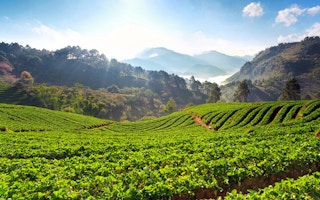My previous blog post provided some context to how forests may fit into the new Sustainable Development Goals (SDG) framework. The timing of this discussion is important, as the UN Open Working Group on SDGs will discuss forests in its final meeting on 3 to 7 February 2014. Following this meeting, member countries of the working group will hand over recommendations for a future development framework that will replace the Millennium Development Goals to the UN Secretary General and the General Assembly.
To continue reading, subscribe to Eco‑Business.
There's something for everyone. We offer a range of subscription plans.
- Access our stories and receive our Insights Weekly newsletter with the free EB Member plan.
- Unlock unlimited access to our content and archive with EB Circle.
- Publish your content with EB Premium.
In the following, I explore some further thoughts on suitable indicators for forestry and landscapes. These have crystallized through an intensive dialogue over the past year on the need for new partnerships and cross-cutting solutions that are not restricted by sectoral silos, governance layers or political boundaries.
The SDG process has, by and large, set out with such ambitions, and signals are strong for constructing an SDG framework that is integrated by design. This constitutes an inherent tension for sectors that traditionally define their goals within an established institutional landscape. The forestry sector is no exception to this, and it will be challenging to refrain from using the sector’s traditional boundaries as a starting point when defining targets and indicators. The SDG process provides an opportunity to step forward and raise the bar for the sector’s contributions by taking a broader view of the issues. This is possible through the landscape approach.
That is, in essence, why we should explore “Sustainable landscapes” as an SDG, owned by no sector, but with opportunities to strengthen the contributions to sustainable development by forestry, agriculture and other sectors.
An attempt to define landscapes was made here. With this approach, landscapes apply to any scale. This means that countries as a whole (or any other jurisdictional level) are also landscapes, which is relevant for the SDG framework, as progress needs to be reported by country.
But what could indicators for “Sustainable landscapes” be?
As the UN now moves into negotiations on the construction of the SDGs, here are some possible indicators to consider:
A. Basic landscape indicators that can be applied on all scales
- Improved landscape livelihoods, measured as farmer/producer income or assets
- Improved ecosystem services, measured as biomass stock in the landscape (including forest and soils)
- Improved resource efficiency in land use, measured as greenhouse gas emissions from land-based sectors
- Improved supply of food and other products from land use, measured as quantity or value by category (here the value of forest products can be a sectoral sub-indicator)
- Improved biodiversity potential, measured, for example, as forest area by ecological type
Each of these suggested five indicators is both measurable and scalable to any type or size of landscapes. They can be applied universally across developed and developing countries.
B. Indicators related to governance of the landscape
- Progress in implementation of, or alignment with, the Voluntary Guidelines on Responsible Governance of Tenure (endorsed by the Committee on World Food Security in 2012), measure TBD
- Existence or implementation of legal frameworks that are conducive to cross-sectoral collaboration and policies at the landscape level, measure TBD
- Progress in implementation of international agreements on labor and employment in the forestry and agriculture sectors, with special reference to gender and child labor, measures TBD
- Level of investments targeted to sustainable land use, measured in monetary terms
The Sustainable Development Solutions Network, a UN initiative, expressed similar ideas to these suggested indicators regarding sustainable agriculture. Specifically, goals 6 and 9 of the SDSN brief are in line with integrated landscapes thinking, as they address environmental, social and economic functions across sectors.
Beyond indicators, another crucial discussion is about what the universal targets should be. Targets can help measure progress and provide guidelines toward the achievement of Sustainable Development Goals. This includes the question of which makes the most sense — absolute targets or relative targets.
Not only looking at landscapes per se, there are additional factors that influence landscapes and the planet indirectly, such as trade and consumption patterns. Further, the primary development issues of poverty, food security and nutrition (mainly beyond agriculture production as such) and health are of course fundamental for people in the world’s landscapes. It is assumed for the purposes of this discussion that other SDGs will cover factors such as these.
It will certainly be interesting to follow and interact with the negotiations over the coming months.
This post originally appeared in the CIFOR Forest News blog.









